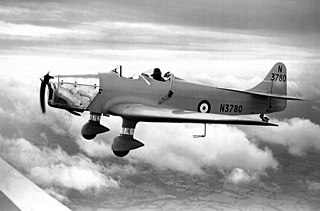
The Miles M.14 Magister is a British two-seat monoplane basic trainer aircraft built by the Miles Aircraft for the Royal Air Force and Fleet Air Arm. Affectionately known as the Maggie, the Magister was based on Miles' civilian Hawk Major and Hawk Trainer and was the first monoplane designed specifically as a trainer for the RAF. As a low-wing monoplane, it was an ideal introduction to the Spitfire and Hurricane for new pilots. Its sister design, the Miles Master was an advanced trainer also built by Phillips & Powis at Woodley.
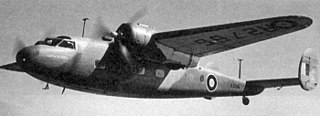
The de Havilland DH.95 Flamingo was a British twin-engined high-wing monoplane airliner first flown on 22 December 1938. During the Second World War some were used by the Royal Air Force (RAF) as a transport and general communications duties.

The Saro A17 Cutty Sark was a British amphibious aircraft from the period between World War I and World War II, built by the British firm Saunders-Roe. The aircraft was named after the ship Cutty Sark, rather than the garment.
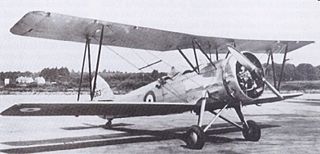
The Avro 626 is a single-engined British biplane trainer aircraft produced by Avro during the (1918-1939) inter-war period.

The de Havilland DH.90 Dragonfly is a 1930s British twin-engined luxury touring biplane built by the de Havilland Aircraft Company at Hatfield Aerodrome.

The Simmonds Spartan is a 1920s British two-seat biplane trainer/tourer aircraft built by Simmonds Aircraft Limited.
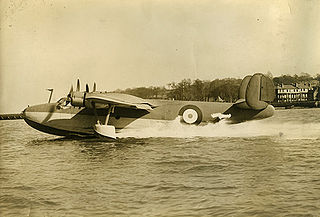
The Saunders Roe A.37 Shrimp was a 1930s British two-seat four-engined experimental flying boat built by Saunders-Roe Limited ("Saro") at Cowes.

The Parnall Heck was a 1930s British four-seat cabin monoplane built by Parnall Aircraft Limited at Yate, Gloucestershire. Originally a Hendy design, few were built. It combined the strength and comfort of a cabin aircraft with the speed of a racer.

The Airco DH.6 was a British military trainer biplane used by the Royal Flying Corps during the First World War. Known by various nicknames, including the "Clutching hand" and "Skyhook", many survived to be used as a civil light aircraft in the postwar era.

The Beagle Husky was a three-seat British light aircraft built in the 1960s which originated from a Portuguese Air Force requirement for a liaison/training aircraft, a development of the Auster Alpha. It first flew as an Auster design in January 1960, but that company was taken over by Beagle Aircraft in September that year. It was initially available with a 160 hp Lycoming O-320 engine as the Auster D5/160.

The Avro Avian was a series of British light aircraft designed and built by Avro in the 1920s and 1930s. While the various versions of the Avian were sound aircraft, they were comprehensively outsold by the de Havilland Moth and its descendants.

The Avro Type E, Type 500, and Type 502 made up a family of early British military aircraft, regarded by Alliott Verdon Roe as his firm's first truly successful design. It was a forerunner of the Avro 504, one of the outstanding aircraft of the First World War.

The Comper C.L.A.7 Swift is a British 1930s single-seat sporting aircraft produced by Comper Aircraft Company Ltd of Hooton Park, Cheshire.
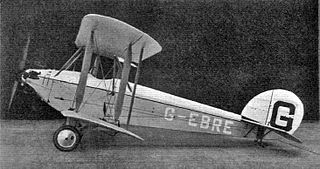
The Blackburn L.1 Bluebird was a British single-engine biplane light trainer/tourer with side-by-side seating, built in small numbers by Blackburn Aircraft in the 1920s.

The Druine D.31 Turbulent is a French single-seat ultralight Homebuilt aircraft designed by Roger Druine.

The Gloster III was a British racing floatplane of the 1920s intended to compete for the Schneider Trophy air race. A single-engined, single-seat biplane, two were built, with one finishing second in the 1925 race.

The de Havilland T.K.1 was a 1930s British two-seat biplane and the first design built by students of the de Havilland Technical School.

The Mosscraft MA.1 was a British light two-seat low-winged sporting monoplane of the 1930s.
Moss Brothers Aircraft Ltd , known as Mosscraft, was an English aircraft manufacturer and repairer which was active between 1936 and the mid-1950s.

The Chilton D.W.1 is a British light sporting monoplane designed and built in the late 1930s by Chilton Aircraft at Hungerford, Berkshire.



















